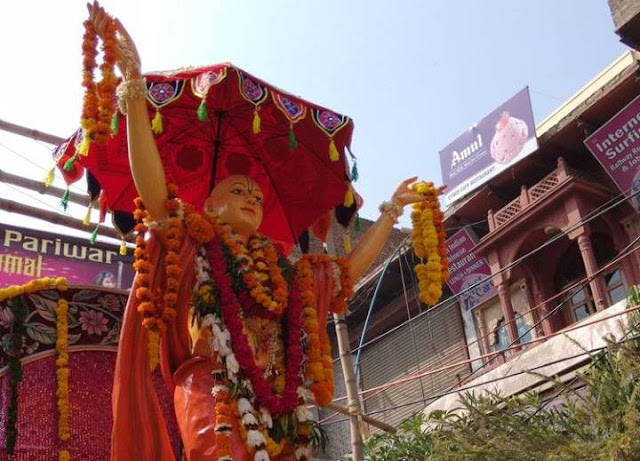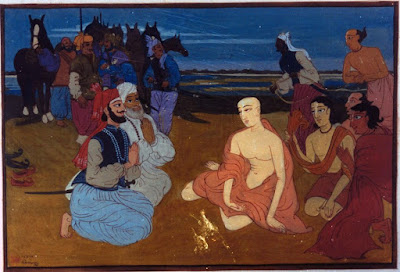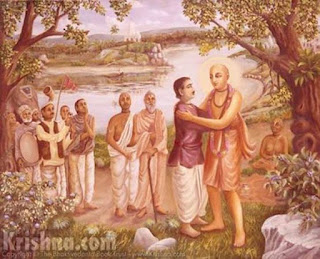Chaitanya Mahaprabhu and Vrindavan (Part II)

3. Mahaprabhu turns back from Kanai Nat Shala The third attempt Mahaprabhu made to go to Vrindavan was more serious, but here again there is a difference in the tone of the stories, with only CCN and CC giving primordial importance to Vrindavan, and CC making the meeting with Rupa and Sanatan the principal, though hidden, purpose of the trip. As we have noted elsewhere, the dates of the MGK are in some dispute and the unity of the composition has been challenged. The date on the manuscripts is given as 1513 AD, but this first trip to Vrindavan also took place in 1515, the successful trip accomplished later in the same year. So this fateful year marked not only the trip to Vrindavan but also the liberation of Rupa and Sanatan from their employ in Hussein Shah's court. Murari Gupta may himself have been the one who filled out the later portions of Mahaprabhu's biography as he heard it from other sources. The style of the later (post-1513) portions does not differ from th

